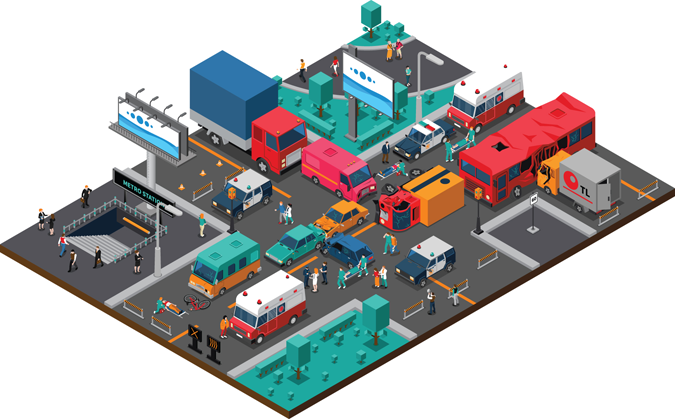When the pandemic first hit, it triggered a tsunami effect in terms of delivery services, especially for last-mile fleets. Along with this massive bump in online retail sales and their related delivery obligations, fleets also saw an increase in accidents, persuading many to look for new ways to protect themselves against claims.
While initial driver pushback paired with accusations of creating a “Big Brother” environment can influence fleets in their decision to add new vehicle technology, in-cab cameras are becoming more common in fleets across the country, with pushback dissolving as drivers experience their benefits first-hand.
Measuring the Need
According to the U.S. Postal Service, national package volume from March-May 2020 jumped 30% compared to 2019 and was even higher than 2019’s holiday peak season volume. Online giant Amazon saw a 47% spike in revenue for the second quarter of 2020, bypassing e-commerce sales for the entirety of 2019. But more sales means more deliveries — and more chances of an accident.
A crash of any sort is a lose-lose proposition for a fleet. At the very least, a vehicle is put out of commission and an experienced driver is sidelined while waiting for it to be repaired. Worse, if that driver was injured, it will cost approximately $70,000 in workers’ compensation claims, about twice the amount of an in-office injury.
If another person was injured or killed in the crash, the fleet and its company could be liable for millions, possibly even resulting in a so-called “nuclear verdict” that could be catastrophic for the company in the short and long term, as its brand will almost certainly be tarnished as a result. Carriers have seen some verdicts amounting to $58 million — some even as high as $178 million. No matter the scenario, motor vehicle crashes are a drain on the productivity and profitability for U.S. companies that operate fleets of vehicles, costing employers $72.2 billion as recently as the year 2019.
While telematics can provide deep insights into vehicle data and driver behavior, adding a video monitoring component to your telematics capabilities completes the overall picture by providing visibility that will help improve efficiency, promote safety, and protect your drivers — and your company — from false claims.
he Benefits of Video Telematics
In short, having eyes on your fleet drivers is a win-win proposition. Specifically, your fleet will see four primary benefits from its use in the event of a crash or other event:
- Know the whole story. The full context of harsh driving and accident events can be reconstructed, including in-cabin driver behavior, weather conditions, the positions of the vehicles involved, and other circumstances for informed decision making.
- Strengthen trust in your employees. You can confidently trust and support your employees without having to do so blindly—that is, without video evidence. You will be able to combat false liability claims with video to help establish the facts.
- Aid in keeping costs of false claims down. Video proof can also help prevent hikes in insurance premiums or damage payouts resulting from unchallenged false accident claims.
- Hold your drivers to a high standard. Though telematics and video data won’t eliminate unsafe driving behaviors on their own, they help you more effectively address those behaviors.
By keeping your drivers accountable and backing them up, it could also help your fleet retain your best-of-the-best employees, which is critical in keeping your fleet productive and safe.
Verizon Connect Can Help
Verizon Connect dashcams consist of a commercial-grade camera with cloud storage. The road-facing camera captures 720p HD video with a 150-degree view, replicating the driver’s field of vision. The driver-facing camera produces a 120-degree view of the camera and is night vision capable.
The Verizon Connect solution begins recording the moment that the driver turns on the engine. When a harsh driving event occurs, the system’s AI engine begins to review the footage based on the driver behavior triggers. The clip is then classified by the AI as a collision, dangerous, harsh driving, or low risk. Within just a few minutes, you or another designated stakeholder will receive an alert—which can either be watched immediately or downloaded for later review.
Additionally, video can be watched alongside GPS or other fleet data, further deepening the context and better understanding the entire chain of events that may have led to the event. Fleets can also request on-demand clips.
While it took more than a decade for many fleets to adopt telematics technology, in just a few years front- and driver-facing cameras are being relied on by about 35% of U.S. fleets according to data collected for the Fleet Technology Trends Report 2021.
There’s little doubt that a video telematics solution can help businesses prioritize safety and productivity, and could be a benefit for your fleet operation.
To learn more how Verizon Connect can help you get eyes on your fleet, visit www.verizonconnect.com.
Sponsored by 
Source: https://www.truckinginfo.com/




